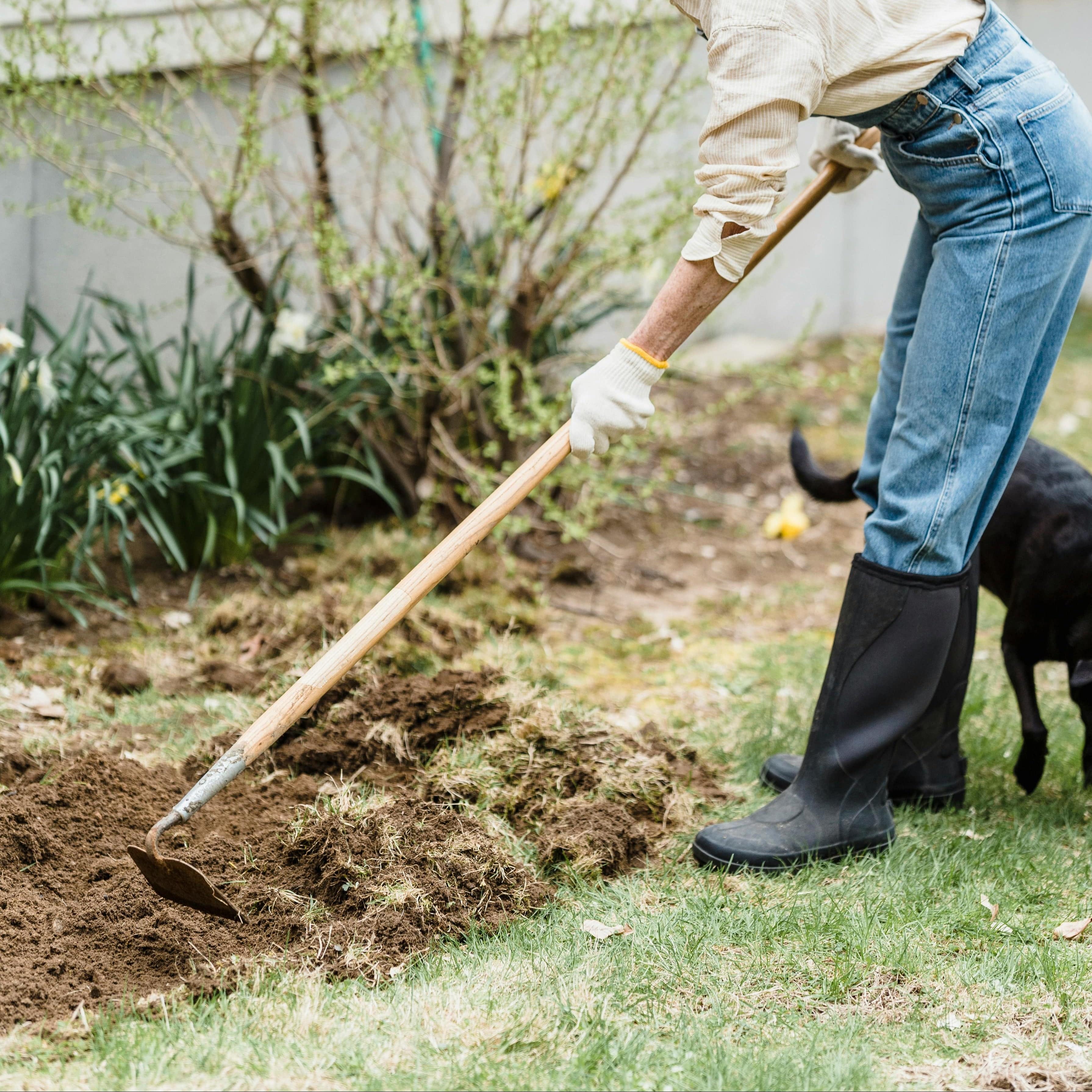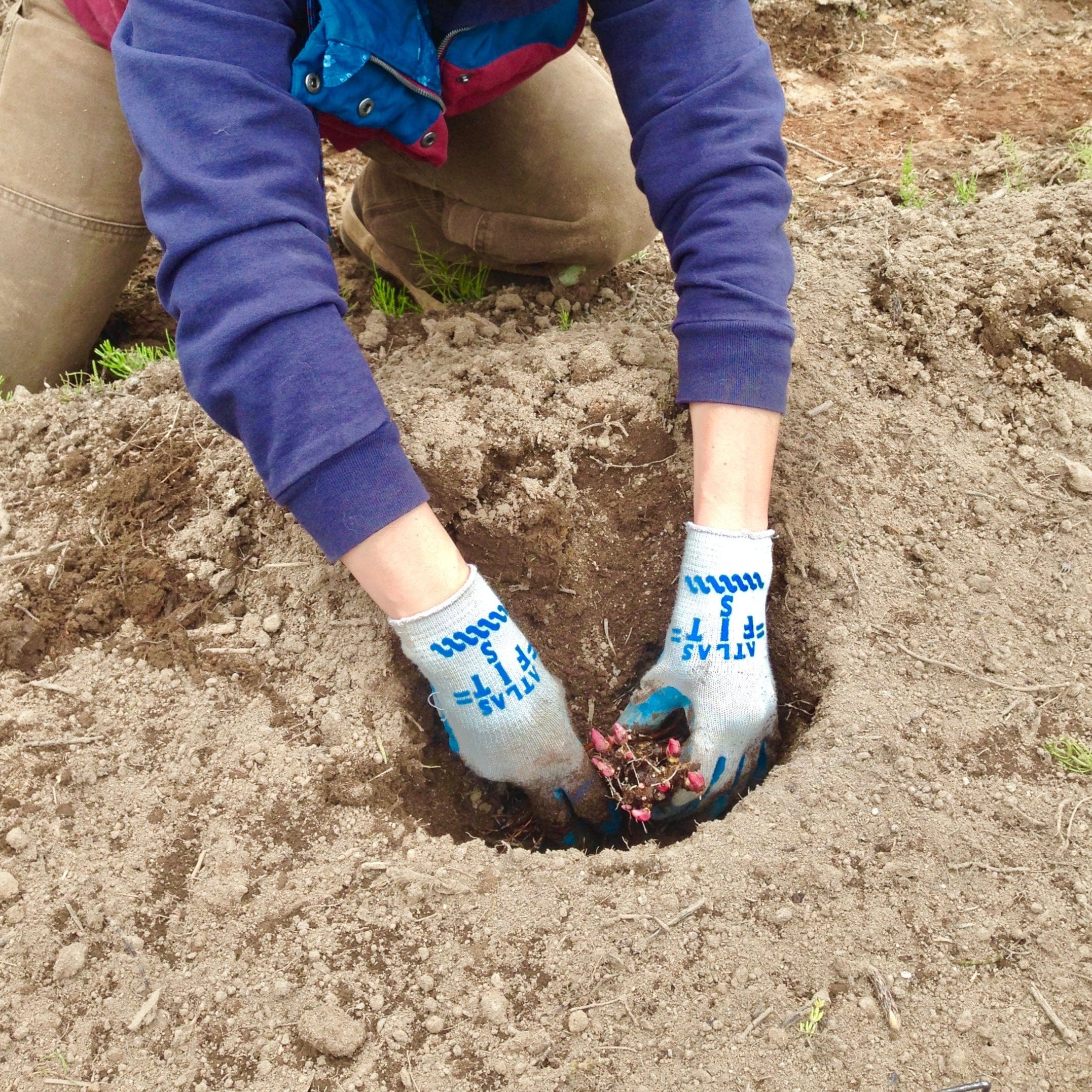bare root planting guide

Choose the right spot
Peonies thrive in full sun, so choose a planting location that receives at least 6 to 8 hours of direct sunlight per day.
Peonies also need a period of winter dormancy to bloom well, which means they require chill hours—a stretch of cold temperatures that signal the plant to rest and reset for spring. This makes them well-suited to USDA hardiness zones 3 through 8, though they can struggle in warmer climates where winters aren’t cold enough.

soil prep
Peonies need well-drained, nutrient-rich soil to thrive. Avoid heavy clay or overly sandy soils—amend with compost or aged manure to improve texture and fertility of your soil.
Aim for a neutral to slightly acidic pH (6.5–7.0). If you're unsure, use a simple soil test kit. You can amend the soil to adjust the pH.
Before planting, loosen the soil 12–18 inches deep and mix in organic matter. Good prep now means healthier plants and better blooms for years to come.

planting depth and spacing
When planting peony roots, depth is key. The eyes (small red or pink buds on the crown) should be planted 1 to 2 inches below the soil surface—any deeper, and your peony may not bloom.
Space plants 3 feet apart to allow for airflow and room to grow. This helps prevent disease and gives each plant the space it needs to mature into a full, blooming bush.
Plant with the roots facing down and the eyes pointing up, then gently backfill with soil and water well.

watering
Water thoroughly after planting to help the soil settle around the roots. Peonies don’t like “wet feet,” but they do need consistent moisture, especially during dry spells.
Avoid overhead watering, which can promote fungal disease. Instead, water at the base of the plant.
Pay special attention to watering in late summer and early fall—this is when peonies set roots for the next year’s growth. Deep, infrequent watering is best to encourage strong, healthy root systems.

Fall and Spring care
In the fall, when the foliage starts to dry out, cut it back to the ground and discard it to prevent disease from overwintering. Don’t compost peony foliage.
In early spring, as new growth emerges, apply a balanced, slow-release fertilizer around the base of the plant (not directly on the crown) to support healthy growth and blooms.
Avoid disturbing the plant, keep the area weed-free, and with time, your peony will become a beautiful, long-lived garden staple.

what to expect
Peonies are slow starters, but they reward patience. It’s completely normal if your plant doesn’t bloom the first year—it’s busy establishing strong roots for future growth.
In the second year, you may see a few blooms as the plant begins to mature. By the third year, most healthy peonies will start to put on a proper show with a modest flush of flowers.
From year four and beyond, you can expect full, abundant blooms each spring—often 20 to 30 stems per plant at peak maturity, depending on the variety and growing conditions.
